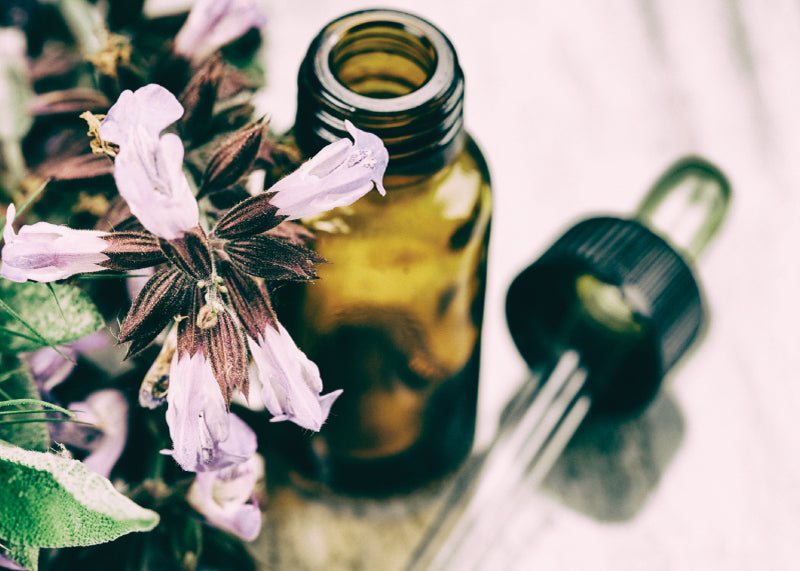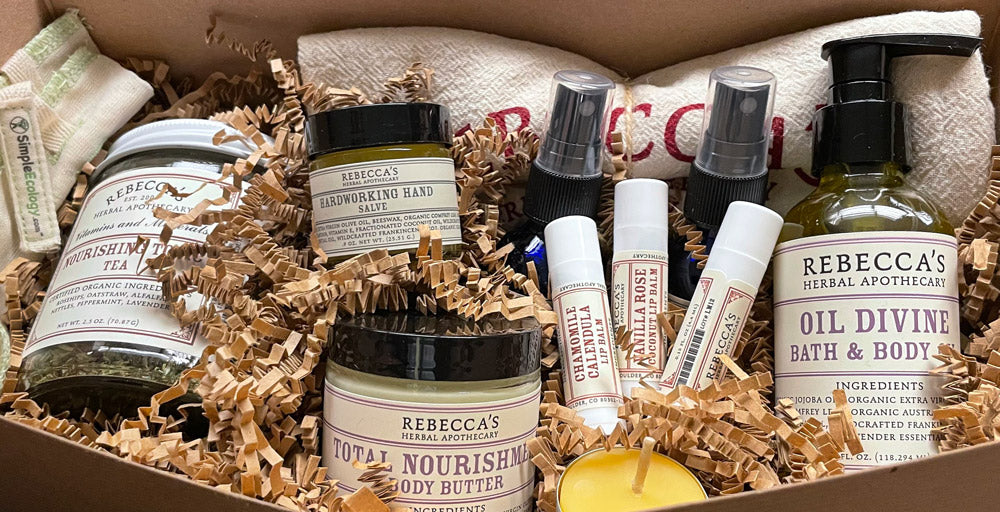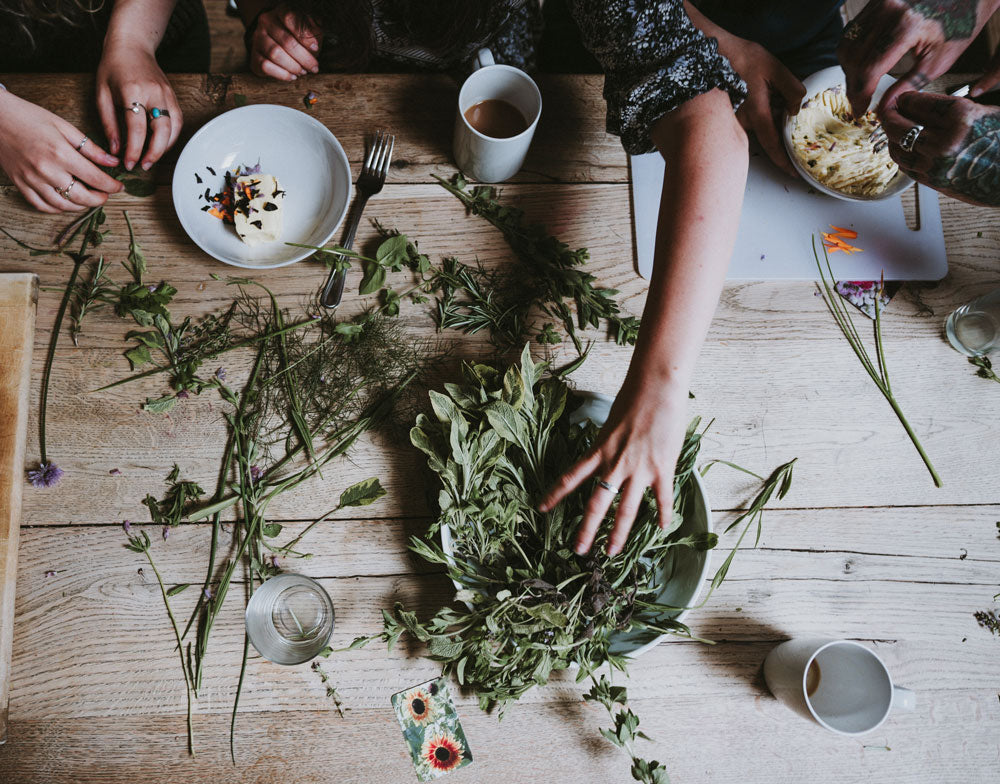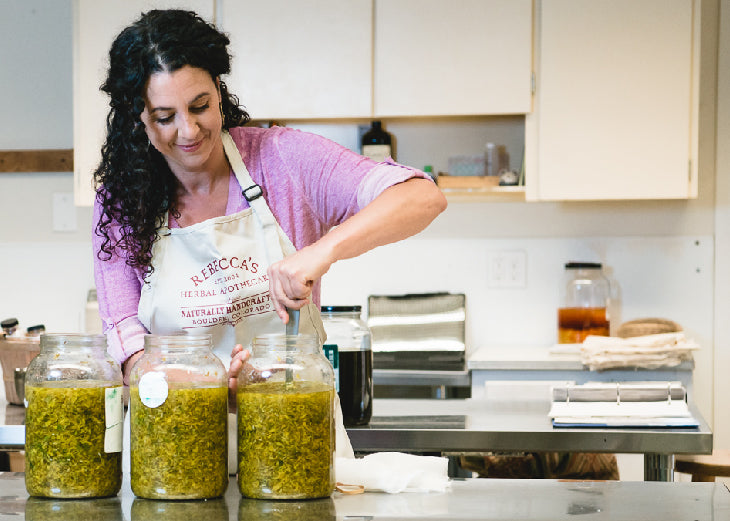Herb Article
Oregon Grape Root
By Amy Timmons, Certified Herbalist
 Herb
Herb
Oregon Grape Root
Latin Name
Mahonia spp.
Parts used
Root, root bark, stems and leaf
Medicinal Properties
When I came to visit Boulder in the spring of 2011 to explore options for relocating to the area, I was encouraged by my teacher at the time to harvest Oregon Grape root. I found it on the cool mountain slopes eager for some attention after a long cold winter. The beauty of its flowers against the slowly melting snow and the power of its bright yellow roots captivated me and inspired further study.
The various Mahonia species are commonly found in over a quarter of the land area in the US. The species that I harvested was Mahonia repens, the most common. It has been given the Spanish name Yerba de Sangre ("Herb of the Blood") because of the fact that its leaves turn red in the late fall. I've often wondered if this name also came from the recognition that Oregon Grape Root is traditionally used as a blood cleanser...
All of the Mahonia species contain the alkaloid Berberine, which is what contributes to Oregon Grape Root's antifungal properties. The constituent Berberine is known to be anti-inflammatory, anticarcinogenic, antibacterial, antimalarial and antiamoebic. The herb Goldenseal is another plant that also contains Berberine but this precious medicinal herb is now endangered. The use of Oregon Grape Root in its place is a great local, affordable and ethical alternative to Goldenseal.
Traditional people of the Southwest used a preparation of the root for loss of appetite and debility. The Physiomedicalists, in the 19th and early 20th centuries, used the herb as a detoxifier and tonic remedy. Today the herb is most commonly used by herbalists for gastritis, digestive weakness, to stimulate gallbladder function, to re-duce congestion (usually of the digestive tract) and for skin conditions such as eczema, psoriasis, acne, boils and herpes.
Preparations and Applications
Tinctures, teas, washes, douches and capsules.
Vaginal Health & Hygiene Formula
These herbs have been known to be helpful for genito-urinary imbalances, as well as nurturing and healing for use in self-care practices.
Oregon Grape (Mahonia spp.) — 2 part
Bee Balm (Monarda spp.) — 2 part
Calendula (Calendula off.) — 1 part
Jasmine (Jasminum off.) — 1 part
Lemon Balm (Melissa off.) — 1 part
Rose Petals (Rosa spp.) — 1/2 part
Thyme (Thymus vulgaris) — 1/2part
Lomatium (Lomatium dissectum) — 1/2 part
The great thing about this formula is that it can be made as a tea, vaginal steam, external wash or a douche.
Tea
Place 2 teaspoons of herb in one 8 oz. cup of water. Pour hot water over herbs and steep 15-20 minutes.
Vaginal Steam
Cover from waist down with towel, blanket or long skirt. Pour boiling water over 1-2 cups of herb mixture and hover over bowl or sitz bath basin for at least 20 minutes.
External Wash
Make tea and apply directly to the skin; easy to apply with a spray mister.
Vaginal Douche
Make 32 oz. of tea. Douche once/day for 7 days. Wait a few days and repeat if necessary. Do not repeat more than 3 times. Discontinue use if there is any irritation or decrease the strength of the douche.
Adapted from Sharol Marie Tilgner's book Herbal Medicine from the Heart of the Earth.
 Herb
HerbOregon Grape Root
Latin Name
Mahonia spp.
Parts used
Root, root bark, stems and leaf
Medicinal Properties
When I came to visit Boulder in the spring of 2011 to explore options for relocating to the area, I was encouraged by my teacher at the time to harvest Oregon Grape root. I found it on the cool mountain slopes eager for some attention after a long cold winter. The beauty of its flowers against the slowly melting snow and the power of its bright yellow roots captivated me and inspired further study.
The various Mahonia species are commonly found in over a quarter of the land area in the US. The species that I harvested was Mahonia repens, the most common. It has been given the Spanish name Yerba de Sangre ("Herb of the Blood") because of the fact that its leaves turn red in the late fall. I've often wondered if this name also came from the recognition that Oregon Grape Root is traditionally used as a blood cleanser...
All of the Mahonia species contain the alkaloid Berberine, which is what contributes to Oregon Grape Root's antifungal properties. The constituent Berberine is known to be anti-inflammatory, anticarcinogenic, antibacterial, antimalarial and antiamoebic. The herb Goldenseal is another plant that also contains Berberine but this precious medicinal herb is now endangered. The use of Oregon Grape Root in its place is a great local, affordable and ethical alternative to Goldenseal.
Traditional people of the Southwest used a preparation of the root for loss of appetite and debility. The Physiomedicalists, in the 19th and early 20th centuries, used the herb as a detoxifier and tonic remedy. Today the herb is most commonly used by herbalists for gastritis, digestive weakness, to stimulate gallbladder function, to re-duce congestion (usually of the digestive tract) and for skin conditions such as eczema, psoriasis, acne, boils and herpes.
Preparations and Applications
Tinctures, teas, washes, douches and capsules.
Vaginal Health & Hygiene Formula
These herbs have been known to be helpful for genito-urinary imbalances, as well as nurturing and healing for use in self-care practices.
Oregon Grape (Mahonia spp.) — 2 part
Bee Balm (Monarda spp.) — 2 part
Calendula (Calendula off.) — 1 part
Jasmine (Jasminum off.) — 1 part
Lemon Balm (Melissa off.) — 1 part
Rose Petals (Rosa spp.) — 1/2 part
Thyme (Thymus vulgaris) — 1/2part
Lomatium (Lomatium dissectum) — 1/2 part
The great thing about this formula is that it can be made as a tea, vaginal steam, external wash or a douche.
Tea
Place 2 teaspoons of herb in one 8 oz. cup of water. Pour hot water over herbs and steep 15-20 minutes.
Vaginal Steam
Cover from waist down with towel, blanket or long skirt. Pour boiling water over 1-2 cups of herb mixture and hover over bowl or sitz bath basin for at least 20 minutes.
External Wash
Make tea and apply directly to the skin; easy to apply with a spray mister.
Vaginal Douche
Make 32 oz. of tea. Douche once/day for 7 days. Wait a few days and repeat if necessary. Do not repeat more than 3 times. Discontinue use if there is any irritation or decrease the strength of the douche.
Adapted from Sharol Marie Tilgner's book Herbal Medicine from the Heart of the Earth.




